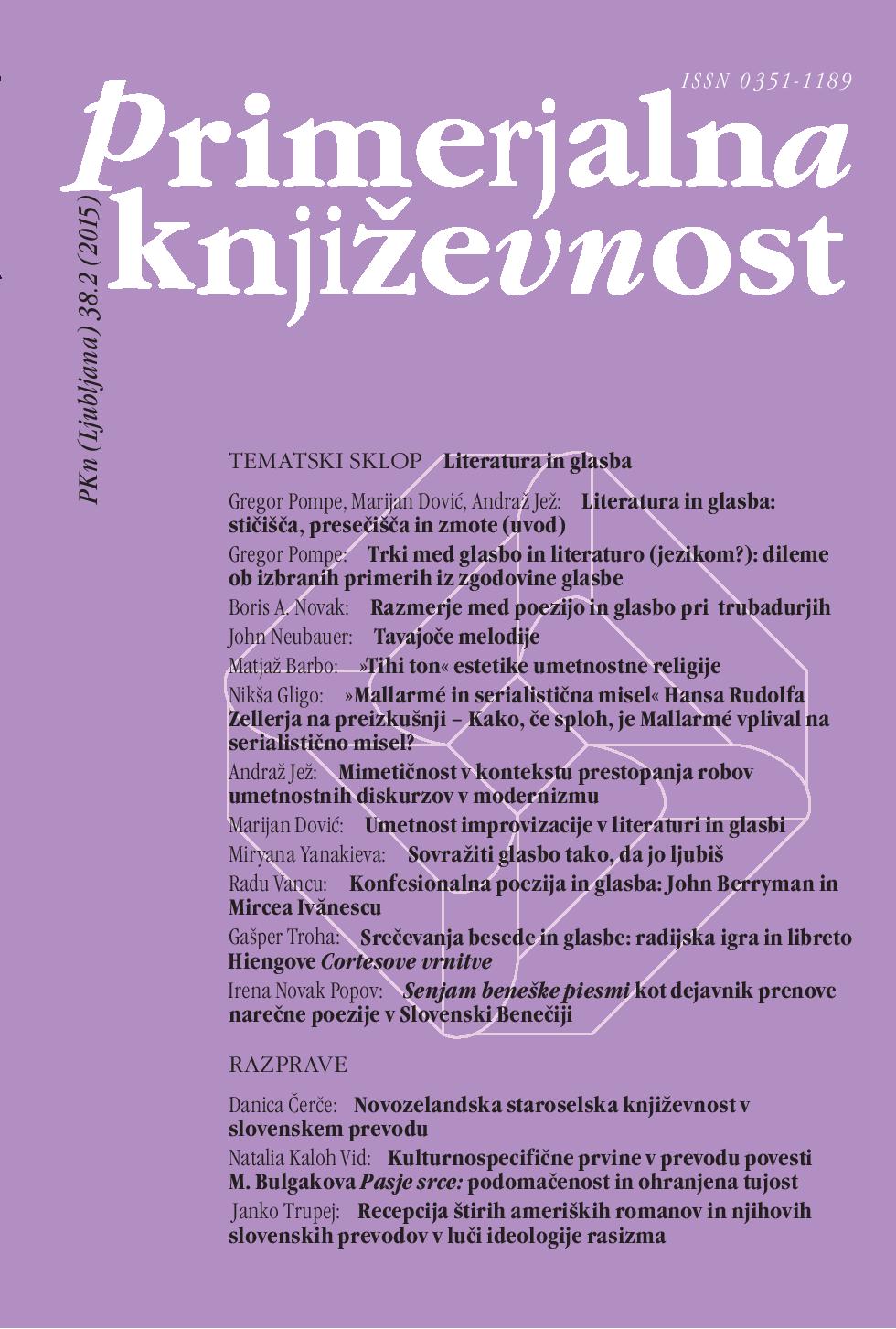Roaming Melodies
Keywords:
literature and music, folk songs, adaptations, Tappert, Wilhelm, Wandernde Melodien, Scottish songs, Hebrew Melodies, intertextuality, intermedialityAbstract
Digitizing and the new media have generated new interactions between the arts and a keen scholarly interest in adaptations and translations. However, adaptation has been a key concept for a long time in Darwinian theories of evolution. Using Wilhelm Tappert’s early Darwinian concept of wandernde Melodien (“roaming melodies”), this article looks at the way in which some early-nineteenth-century folk songs underwent mutations and translations. These melodies have no fixed identities; they are, as Tappert says, roaming tourists ceaselessly changing and adapting to new circumstances. Such adaptation histories of songs show affinities with adaptations in biocultural evolution.References
Avenary. Hanoch. “The Ma’oz Zur Tune: New Facts for Its History.” Encounters of East and West in Music. Selected Writings. Tel Aviv: Tel Aviv UP, 1979. 175–85.
Bohlman, Philip V. Study of Folk Music in the Modern World. Bloomington: Indiana UP, 1988.
Bojić, Vera. “Vuks serbische Volkslieder in der europäischen Musik. Ein Beitrag zur Rezeptionsforschung.” Vuk Karadžić im europäischen Kontext. Ed. Wilfried Potthoff. Heidelberg: Winter, 1990.
Burwick, Frederick and Paul Douglass, ed. A Selection of Hebrew Melodies, Ancient and Modern. Facs. Repr. of the 1815–16 original edition. Tuscaloosa: U of Alabama P, 1988.
Cooper, Barry A. R. Beethoven’s Folksong Settings. Chronology, Sources, Style. Oxford: Clarendon P, 1994.
Karadžić, Vuk Stefanović. Sabrana dela. Vol. 12. Belgrade: Prosveta, 1965 ff.
Kopitar, Bartholomäus [Jernej]. Grammatik der Slavischen Sprache in Krain, Kaernten, und Steyermark. Ljubljana: Korn, 1808. Rpt. Munich: Trofenik, 1970.
Nettl, Bruno. The Study of Ethnomusicology: Twenty-Nine Issues and Concepts. Urbana: U of Illinois P, 1983.
O’Carolan, Turlough. “Young Terence MacDonough.” A General Collection of the Ancient Irish Music, Containing a Variety of Admired Airs, Never Before Published, and Also the Compositions of Conolan & Carolan; Collected from the Harpers & c. in the different Provinces of Ireland, and Adapted for the Piano-Forte, with a Prefatory Introduction by Edward Bunting. Vol. 1. London: Preston & Son, 1796.
Scott, Walter. Letters of Sir Walter Scott. Ed. H. J. C. Grierson. Vol. 3. London: Constable, 1932.
– – –. The Works of Walter Scott. Vol. 8. Edinburgh: Constable et al, 1813.
Sharp, Cecil J. English Folk-Song: Some Conclusions. London: Simkin; Novello, 1907.
O’Sullivan, Dónal. Carolan. The Life and Times of an Irish Harper. Vol. 1. Yorkshire: Celtic Music, 1983.
Tappert, Wilhelm. Wandernde Melodien. Eine musikalische Studie. 1868. 2nd ed. Berlin: Brachvogel & Ranft, 1889.
Thomson, George, ed. A Select Collection of Original Scotish Airs for the Voice. To each of which are added Introductory & Concluding Symphonies & Accompanyments for the Violin & Piano Forte, by Pleyel. With Select & Characteristic Verses by the most admired Scotish Poets adapted to each Air, many of them entirely new. Also Suitable English Verses in addition to such of the Songs as are written in the Scotish dialect. London: Preston & Son, 1793.
– – –. ed. A Select Collection of Original Irish Airs for the Voice. United to Characteristic English Poetry Written for This Work with Symphonies & Accompaniments for the Piano Forte, Violin, and Violoncello, Composed by Beethoven. Vol. 1. London: Thomas Preston; Edinburgh: George Thomson, 1814.
Werner, Eric. A Voice Still Heard: The Sacred Songs of the Ashkenazic Jews. University Park: Pennsylvania State UP, 1976.
Wilson, Duncan. Vuk Stefanović Karadžić 1787–1864. Oxford: Clarendon P, 1970. Facs. repr. Ann Arbor: University of Michigan, 1986.


